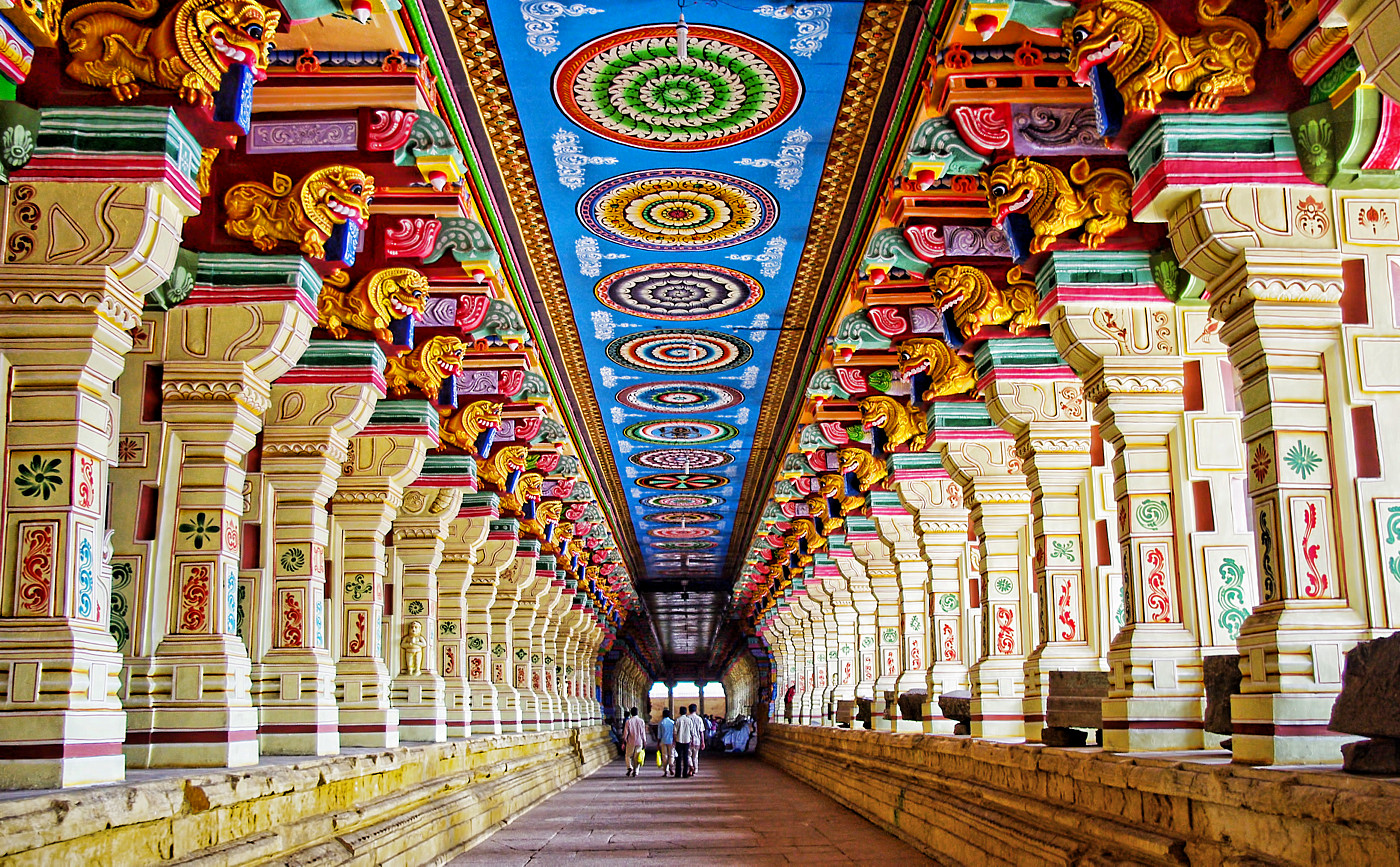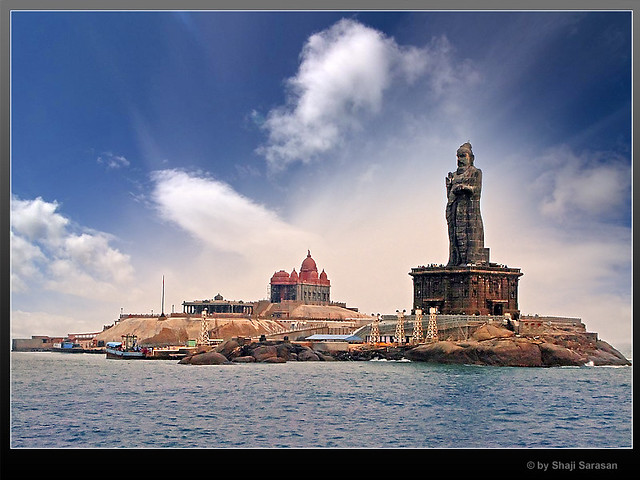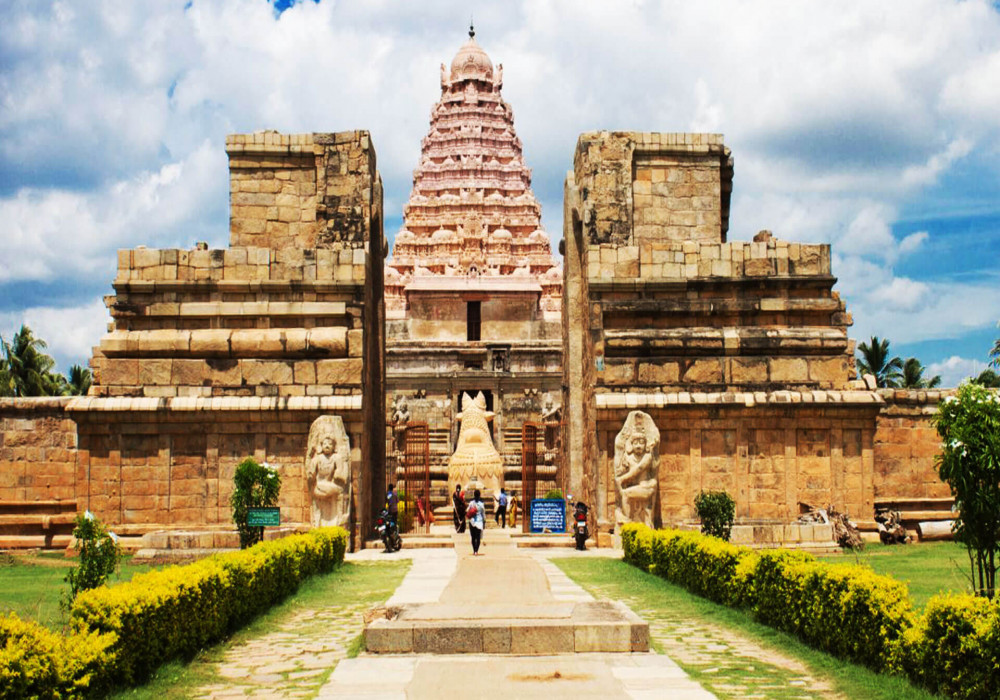
TAMILNADU
The ancient, literary rich, classical Tamil is the official language of Tamilnadu and people are attach to a lot of respect towards Tamil as their cultural identity. Because of these attitude and respect toward their culture, it is considered to have their cultural essence up to date and known for their religious cultures. Hinduism is the majority religion followed by some Muslim and Christianity as minority religions.
People in Tamil Nadu have great taste for arts and culture. Carnatic music, Bharatanatyam dance form, folk music and rural dance forms are a fun to watch and a treat to the eyes and ears. They are colorful, vibrant and energetic with inspirational thoughts and about social issues. These art forms are performed during all occasions of celebrations, be it sorrow or joy.
Apart from the ancient culture, Tamilnadu is famous for the foods like Idli, Dosai, Pongal, Upma. there are variety of foods when it comes to any function and the main ritual is eating in banana leaf which is an important and must thing in Tamilnadu. Tamilnadu is a place where you can go whenever you want to . The attractive thing about Tamilnadu is the richness of the food and the temple which are filled with ancient sculpture.
Noe we are going to see the religious places of Tamilnadu.
TOP 5 RELIGIOUS PLACE OF TAMILNADU
1. MEENAKSHI AMMAN TEMPLE:
HISTORIC STORY:
Madurai was the seat of power of the Pandyan Empire. It was built by the Pandyan king Kulasekhara and was the capital city of the great Pandya kings of South India. It was later ruled by Cholas, Later Pandyas, Madurai Sultanate, Vijayanagara, Madurai Nayaks, and finally British. Pandyas and Nayaks contributed enormously to the development of Meenakshi Amman Temple and Madurai city.
Madurai is best visited during the winter months from October to March. This is also the time to witness the popular harvest festival Tamilnadu, Pongal which is regarded as an extremely special festival in Madurai. Better to avoid visiting Madurai in summer when the weather is uncharacteristically hot, and dry.
2. RAMESHWARAM
Rameswaram Temple is one of the most famous Shiva shrines in India. Sri Ramanathaswamy Temple, Agnitheertham, Gandamadana Parvatham, Dhanushkodi, Kothandaraswamy Temple and Erwadi are the popular places to visit in Rameswaram. Sri Ramanathaswamy temple (Rameswaram Temple) is one of the most fascinating temples in entire India. This is renowned for its magnificent corridors and massive sculptured pillars. The third corridor of Ramanathaswamy temple is the longest one in the world.
HISTORIC STORY:
It is significant for Hindus as a pilgrimage to Banaras is incomplete without a Pilgrimage to Rameswaram. According to the legend, Rameswaram is the place from where Lord Rama, built a bridge across the sea to rescue his consort Sita from Ravana. This is also the place where Rama worshipped Lord Shiva to cleanse away the sin of killing Ravana. Both the Vaishnavism and Shaivites visit this pilgrimage which is known as the Varanasi of South. Rameswaram along with Dwarka, Puri and Badrinath form the four Char Dham.
3. KANNIYAKUMARI:
HISTORIC STORY:
This place offers marvelous Sunset and Sunrise views. It is the only place in India where one can enjoy the unique spectacle of Sunset and Moonrise simultaneously on full moon days. It was ruled by Cholas, Pandyas and Nayaks. Later on, Kanyakumari came under the rule of the Venad dynasty and its capital was located at Padmanabhapuram. In spite of the troubles encountered in the southern border of Venad, Marthanda Varma expanded the kingdom northwards to Aluva and established the kingdom of Travancore. In 1745, the capital was shifted from Padmanabhapuram to Thiruvananthapuram. Kanyakumari was ruled by the kings of Travancore, under the authority of the British, till India's independence in 1947, after that it became a part of the independent Indian Union.
One of the main attractions in Kanyakumari is the Kumari Amman Temple. Considered as one of the Shakti Peethas, this temple attracts large number of devotees every year. The Vivekananda Rock Memorial, Gandhi Memorial, Thiruvalluvar Statue, Padmanabhapuram Palace, Suchindram, Pechiparai Reservoir, Vattakottai Fort, St Xavier's Church and Udayagiri Fort are the places to visit in Kanyakumari.
4.KANCHIPURAM:
Located on the banks of the Palar River, Kanchi is well-known for its temples and silk sarees which are woven manually. Kamakshi Amman Temple, Varadharaja Perumal Temple, Kailasanathar Temple, Karchapeshwarar Temple, and Ekambaranatha Temple are the top places to visit in Kanchi. Ekambaranatha Temple is one of the five forms of abodes of Lord Siva, (it is the earth abode here, other abodes include Chidambaram (Sky), Sri Kalahasti (air), Thiruvanaikoil (water), and Tiruvannamalai (fire).
HISTORICAL STORY:
The city served as the capital of the Pallava Dynasty, and most of the known temples were built during their reign. From the 3rd to the 9th century CE, Kanchi was the capital of the Pallavas who ruled over the territory extending from the river Krishna in Andhra Pradesh to the river Kaveri in the south.
The Pallavas fortified the city with ramparts, moats, etc., with wide and well laid out roads and fine temples. They were a great maritime power with contacts with far-off China, Siam, Fiji, etc., through their chief Port Mamallapuram, the modern Mahabalipuram. The Cholas ruled this town from the 10th century to the 13th century after the fall of Pallavas. Kanchi came under the control of the Vijayanagara kingdom from the 14th century to the 17th century and was controlled by the British from the end of the 18th century.
5.KUMBAKONAM:
Kumbakonam is one of the ancient temple town located amidst the two rivers Cauvery and Arasalar in Thanjavur district of Tamil Nadu. The name Kumbakonam in English means the Pot's Corner. In the olden days, it was called Thirukudamookku and it is also popularly called Kudanthai now. The town is well-known for its prestigious educational institutions and carved Panchaloha idols, silk products, brass, and metal wares. It is primarily a market town for the predominantly agriculture-based villages surrounding it. Betel leaves are cultivated more in Kumbakonam since it is also called Kumbakonam Vettrilai (in Tamil).
HISTORIC STORY:
According to history, Kumbakonam dates back to the Sangam period and was ruled by the Early Cholas, Pallavas, Medieval Cholas, Later Cholas, Pandyas, the Vijayanagar Kings, Madurai Nayaks, Thanjavur Nayaks, and the Thanjavur Marathas. It rose to be a prominent city between the 7th and 9th centuries AD when it served as a capital of the Medieval Cholas. The town reached the zenith of its prosperity during the British Raj when it was a prominent center of European education and Hindu culture; and it acquired the cultural name, the Cambridge of South India.
There are around 188 Hindu temples within the municipal limits of Kumbakonam. Adi Kumbeswarar temple, Nageswaraswamy temple, and Kasi Viswanathar temple are the prominent Shiva temples in the town and it has one of the few temples dedicated to the god Brahma. Sarangapani temple is the largest Vaishnava shrine present in Kumbakonam. The Dhenupureeswarar Temple at Patteeswaram, the Oppiliappan Kovil, the Swamimalai Murugan temple, and the Airavateeswarar temple at Darasuram are the other prominent places to visit in Kumbakonam.




